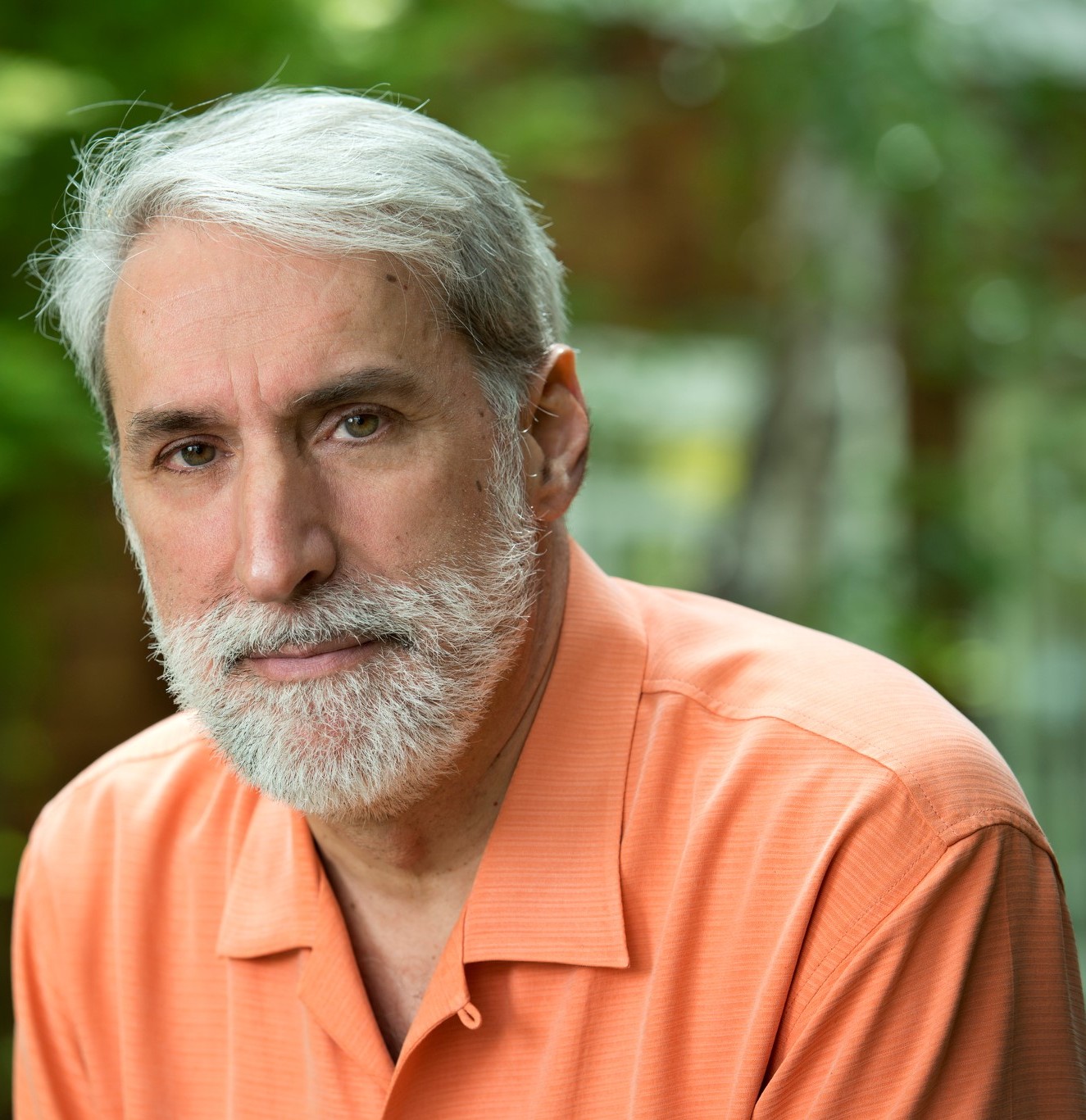A PHP Error was encountered
Severity: 8192
Message: Creation of dynamic property CI_URI::$config is deprecated
Filename: core/URI.php
Line Number: 101
Backtrace:
File: /home/scotchem/public_html/talks/index.php
A PHP Error was encountered
Severity: 8192
Message: Creation of dynamic property CI_Router::$uri is deprecated
Filename: core/Router.php
Line Number: 127
Backtrace:
File: /home/scotchem/public_html/talks/index.php
A PHP Error was encountered
Severity: 8192
Message: Creation of dynamic property Talks::$benchmark is deprecated
Filename: core/Controller.php
Line Number: 75
Backtrace:
File: /home/scotchem/public_html/talks/application/controllers/Talks.php
File: /home/scotchem/public_html/talks/index.php
A PHP Error was encountered
Severity: 8192
Message: Creation of dynamic property Talks::$hooks is deprecated
Filename: core/Controller.php
Line Number: 75
Backtrace:
File: /home/scotchem/public_html/talks/application/controllers/Talks.php
File: /home/scotchem/public_html/talks/index.php
A PHP Error was encountered
Severity: 8192
Message: Creation of dynamic property Talks::$config is deprecated
Filename: core/Controller.php
Line Number: 75
Backtrace:
File: /home/scotchem/public_html/talks/application/controllers/Talks.php
File: /home/scotchem/public_html/talks/index.php
A PHP Error was encountered
Severity: 8192
Message: Creation of dynamic property Talks::$log is deprecated
Filename: core/Controller.php
Line Number: 75
Backtrace:
File: /home/scotchem/public_html/talks/application/controllers/Talks.php
File: /home/scotchem/public_html/talks/index.php
A PHP Error was encountered
Severity: 8192
Message: Creation of dynamic property Talks::$utf8 is deprecated
Filename: core/Controller.php
Line Number: 75
Backtrace:
File: /home/scotchem/public_html/talks/application/controllers/Talks.php
File: /home/scotchem/public_html/talks/index.php
A PHP Error was encountered
Severity: 8192
Message: Creation of dynamic property Talks::$uri is deprecated
Filename: core/Controller.php
Line Number: 75
Backtrace:
File: /home/scotchem/public_html/talks/application/controllers/Talks.php
File: /home/scotchem/public_html/talks/index.php
A PHP Error was encountered
Severity: 8192
Message: Creation of dynamic property Talks::$exceptions is deprecated
Filename: core/Controller.php
Line Number: 75
Backtrace:
File: /home/scotchem/public_html/talks/application/controllers/Talks.php
File: /home/scotchem/public_html/talks/index.php
A PHP Error was encountered
Severity: 8192
Message: Creation of dynamic property Talks::$router is deprecated
Filename: core/Controller.php
Line Number: 75
Backtrace:
File: /home/scotchem/public_html/talks/application/controllers/Talks.php
File: /home/scotchem/public_html/talks/index.php
A PHP Error was encountered
Severity: 8192
Message: Creation of dynamic property Talks::$output is deprecated
Filename: core/Controller.php
Line Number: 75
Backtrace:
File: /home/scotchem/public_html/talks/application/controllers/Talks.php
File: /home/scotchem/public_html/talks/index.php
A PHP Error was encountered
Severity: 8192
Message: Creation of dynamic property Talks::$security is deprecated
Filename: core/Controller.php
Line Number: 75
Backtrace:
File: /home/scotchem/public_html/talks/application/controllers/Talks.php
File: /home/scotchem/public_html/talks/index.php
A PHP Error was encountered
Severity: 8192
Message: Creation of dynamic property Talks::$input is deprecated
Filename: core/Controller.php
Line Number: 75
Backtrace:
File: /home/scotchem/public_html/talks/application/controllers/Talks.php
File: /home/scotchem/public_html/talks/index.php
A PHP Error was encountered
Severity: 8192
Message: Creation of dynamic property Talks::$lang is deprecated
Filename: core/Controller.php
Line Number: 75
Backtrace:
File: /home/scotchem/public_html/talks/application/controllers/Talks.php
File: /home/scotchem/public_html/talks/index.php
A PHP Error was encountered
Severity: 8192
Message: Creation of dynamic property Talks::$load is deprecated
Filename: core/Controller.php
Line Number: 78
Backtrace:
File: /home/scotchem/public_html/talks/application/controllers/Talks.php
File: /home/scotchem/public_html/talks/index.php
A PHP Error was encountered
Severity: Warning
Message: "continue" targeting switch is equivalent to "break". Did you mean to use "continue 2"?
Filename: helpers/ben_helper.php
Line Number: 302
Backtrace:
File: /home/scotchem/public_html/talks/application/controllers/Talks.php
File: /home/scotchem/public_html/talks/index.php
A PHP Error was encountered
Severity: 8192
Message: Optional parameter $author_name declared before required parameter $filename is implicitly treated as a required parameter
Filename: helpers/ben_helper.php
Line Number: 841
Backtrace:
File: /home/scotchem/public_html/talks/application/controllers/Talks.php
File: /home/scotchem/public_html/talks/index.php
A PHP Error was encountered
Severity: 8192
Message: Creation of dynamic property Talks::$db is deprecated
Filename: core/Loader.php
Line Number: 390
Backtrace:
File: /home/scotchem/public_html/talks/application/controllers/Talks.php
File: /home/scotchem/public_html/talks/index.php
A PHP Error was encountered
Severity: 8192
Message: Creation of dynamic property CI_DB_mysqli_driver::$failover is deprecated
Filename: database/DB_driver.php
Line Number: 371
Backtrace:
File: /home/scotchem/public_html/talks/application/controllers/Talks.php
File: /home/scotchem/public_html/talks/index.php
A PHP Error was encountered
Severity: 8192
Message: Creation of dynamic property Talks::$pagination is deprecated
Filename: core/Loader.php
Line Number: 1279
Backtrace:
File: /home/scotchem/public_html/talks/application/controllers/Talks.php
File: /home/scotchem/public_html/talks/index.php
A PHP Error was encountered
Severity: 8192
Message: Creation of dynamic property Talks::$agent is deprecated
Filename: core/Loader.php
Line Number: 1279
Backtrace:
File: /home/scotchem/public_html/talks/application/controllers/Talks.php
File: /home/scotchem/public_html/talks/index.php
A PHP Error was encountered
Severity: 8192
Message: Creation of dynamic property Talks::$zip is deprecated
Filename: core/Loader.php
Line Number: 1279
Backtrace:
File: /home/scotchem/public_html/talks/application/controllers/Talks.php
File: /home/scotchem/public_html/talks/index.php
A PHP Error was encountered
Severity: 8192
Message: Optional parameter $options declared before required parameter $closed is implicitly treated as a required parameter
Filename: models/Poll_model.php
Line Number: 191
Backtrace:
File: /home/scotchem/public_html/talks/application/libraries/Poll_lib.php
File: /home/scotchem/public_html/talks/application/controllers/Talks.php
File: /home/scotchem/public_html/talks/index.php
A PHP Error was encountered
Severity: 8192
Message: Creation of dynamic property Talks::$poll_model is deprecated
Filename: core/Loader.php
Line Number: 353
Backtrace:
File: /home/scotchem/public_html/talks/application/libraries/Poll_lib.php
File: /home/scotchem/public_html/talks/application/controllers/Talks.php
File: /home/scotchem/public_html/talks/index.php
A PHP Error was encountered
Severity: 8192
Message: Creation of dynamic property Talks::$poll_lib is deprecated
Filename: core/Loader.php
Line Number: 1279
Backtrace:
File: /home/scotchem/public_html/talks/application/controllers/Talks.php
File: /home/scotchem/public_html/talks/index.php
A PHP Error was encountered
Severity: 8192
Message: Creation of dynamic property Talks::$encryption is deprecated
Filename: core/Loader.php
Line Number: 1279
Backtrace:
File: /home/scotchem/public_html/talks/application/controllers/Talks.php
File: /home/scotchem/public_html/talks/index.php
A PHP Error was encountered
Severity: 8192
Message: Creation of dynamic property Talks::$xmlrpc is deprecated
Filename: core/Loader.php
Line Number: 1279
Backtrace:
File: /home/scotchem/public_html/talks/application/controllers/Talks.php
File: /home/scotchem/public_html/talks/index.php
A PHP Error was encountered
Severity: 8192
Message: Creation of dynamic property Talks::$form_validation is deprecated
Filename: core/Loader.php
Line Number: 1279
Backtrace:
File: /home/scotchem/public_html/talks/application/controllers/Talks.php
File: /home/scotchem/public_html/talks/index.php
A PHP Error was encountered
Severity: 8192
Message: Creation of dynamic property Talks::$email is deprecated
Filename: core/Loader.php
Line Number: 1279
Backtrace:
File: /home/scotchem/public_html/talks/application/controllers/Talks.php
File: /home/scotchem/public_html/talks/index.php
A PHP Error was encountered
Severity: 8192
Message: Creation of dynamic property Talks::$upload is deprecated
Filename: core/Loader.php
Line Number: 1279
Backtrace:
File: /home/scotchem/public_html/talks/application/controllers/Talks.php
File: /home/scotchem/public_html/talks/index.php
A PHP Error was encountered
Severity: 8192
Message: Creation of dynamic property Talks::$paypal is deprecated
Filename: core/Loader.php
Line Number: 1279
Backtrace:
File: /home/scotchem/public_html/talks/application/controllers/Talks.php
File: /home/scotchem/public_html/talks/index.php
A PHP Error was encountered
Severity: 8192
Message: Return type of CI_Session_database_driver::open($save_path, $name) should either be compatible with SessionHandlerInterface::open(string $path, string $name): bool, or the #[\ReturnTypeWillChange] attribute should be used to temporarily suppress the notice
Filename: drivers/Session_database_driver.php
Line Number: 129
Backtrace:
File: /home/scotchem/public_html/talks/application/controllers/Talks.php
File: /home/scotchem/public_html/talks/index.php
A PHP Error was encountered
Severity: 8192
Message: Return type of CI_Session_database_driver::close() should either be compatible with SessionHandlerInterface::close(): bool, or the #[\ReturnTypeWillChange] attribute should be used to temporarily suppress the notice
Filename: drivers/Session_database_driver.php
Line Number: 278
Backtrace:
File: /home/scotchem/public_html/talks/application/controllers/Talks.php
File: /home/scotchem/public_html/talks/index.php
A PHP Error was encountered
Severity: 8192
Message: Return type of CI_Session_database_driver::read($session_id) should either be compatible with SessionHandlerInterface::read(string $id): string|false, or the #[\ReturnTypeWillChange] attribute should be used to temporarily suppress the notice
Filename: drivers/Session_database_driver.php
Line Number: 149
Backtrace:
File: /home/scotchem/public_html/talks/application/controllers/Talks.php
File: /home/scotchem/public_html/talks/index.php
A PHP Error was encountered
Severity: 8192
Message: Return type of CI_Session_database_driver::write($session_id, $session_data) should either be compatible with SessionHandlerInterface::write(string $id, string $data): bool, or the #[\ReturnTypeWillChange] attribute should be used to temporarily suppress the notice
Filename: drivers/Session_database_driver.php
Line Number: 206
Backtrace:
File: /home/scotchem/public_html/talks/application/controllers/Talks.php
File: /home/scotchem/public_html/talks/index.php
A PHP Error was encountered
Severity: 8192
Message: Return type of CI_Session_database_driver::destroy($session_id) should either be compatible with SessionHandlerInterface::destroy(string $id): bool, or the #[\ReturnTypeWillChange] attribute should be used to temporarily suppress the notice
Filename: drivers/Session_database_driver.php
Line Number: 295
Backtrace:
File: /home/scotchem/public_html/talks/application/controllers/Talks.php
File: /home/scotchem/public_html/talks/index.php
A PHP Error was encountered
Severity: 8192
Message: Return type of CI_Session_database_driver::gc($maxlifetime) should either be compatible with SessionHandlerInterface::gc(int $max_lifetime): int|false, or the #[\ReturnTypeWillChange] attribute should be used to temporarily suppress the notice
Filename: drivers/Session_database_driver.php
Line Number: 333
Backtrace:
File: /home/scotchem/public_html/talks/application/controllers/Talks.php
File: /home/scotchem/public_html/talks/index.php
A PHP Error was encountered
Severity: Warning
Message: ini_set(): Session ini settings cannot be changed after headers have already been sent
Filename: Session/Session.php
Line Number: 284
Backtrace:
File: /home/scotchem/public_html/talks/application/controllers/Talks.php
File: /home/scotchem/public_html/talks/index.php
A PHP Error was encountered
Severity: Warning
Message: session_set_cookie_params(): Session cookie parameters cannot be changed after headers have already been sent
Filename: Session/Session.php
Line Number: 291
Backtrace:
File: /home/scotchem/public_html/talks/application/controllers/Talks.php
File: /home/scotchem/public_html/talks/index.php
A PHP Error was encountered
Severity: Warning
Message: ini_set(): Session ini settings cannot be changed after headers have already been sent
Filename: Session/Session.php
Line Number: 306
Backtrace:
File: /home/scotchem/public_html/talks/application/controllers/Talks.php
File: /home/scotchem/public_html/talks/index.php
A PHP Error was encountered
Severity: Warning
Message: ini_set(): Session ini settings cannot be changed after headers have already been sent
Filename: Session/Session.php
Line Number: 316
Backtrace:
File: /home/scotchem/public_html/talks/application/controllers/Talks.php
File: /home/scotchem/public_html/talks/index.php
A PHP Error was encountered
Severity: Warning
Message: ini_set(): Session ini settings cannot be changed after headers have already been sent
Filename: Session/Session.php
Line Number: 317
Backtrace:
File: /home/scotchem/public_html/talks/application/controllers/Talks.php
File: /home/scotchem/public_html/talks/index.php
A PHP Error was encountered
Severity: Warning
Message: ini_set(): Session ini settings cannot be changed after headers have already been sent
Filename: Session/Session.php
Line Number: 318
Backtrace:
File: /home/scotchem/public_html/talks/application/controllers/Talks.php
File: /home/scotchem/public_html/talks/index.php
A PHP Error was encountered
Severity: Warning
Message: ini_set(): Session ini settings cannot be changed after headers have already been sent
Filename: Session/Session.php
Line Number: 319
Backtrace:
File: /home/scotchem/public_html/talks/application/controllers/Talks.php
File: /home/scotchem/public_html/talks/index.php
A PHP Error was encountered
Severity: Warning
Message: ini_set(): Session ini settings cannot be changed after headers have already been sent
Filename: Session/Session.php
Line Number: 377
Backtrace:
File: /home/scotchem/public_html/talks/application/controllers/Talks.php
File: /home/scotchem/public_html/talks/index.php
A PHP Error was encountered
Severity: Warning
Message: session_set_save_handler(): Session save handler cannot be changed after headers have already been sent
Filename: Session/Session.php
Line Number: 110
Backtrace:
File: /home/scotchem/public_html/talks/application/controllers/Talks.php
File: /home/scotchem/public_html/talks/index.php
A PHP Error was encountered
Severity: Warning
Message: session_start(): Session cannot be started after headers have already been sent
Filename: Session/Session.php
Line Number: 143
Backtrace:
File: /home/scotchem/public_html/talks/application/controllers/Talks.php
File: /home/scotchem/public_html/talks/index.php
A PHP Error was encountered
Severity: 8192
Message: Creation of dynamic property Talks::$session is deprecated
Filename: core/Loader.php
Line Number: 1279
Backtrace:
File: /home/scotchem/public_html/talks/application/controllers/Talks.php
File: /home/scotchem/public_html/talks/index.php
A PHP Error was encountered
Severity: 8192
Message: Creation of dynamic property Talks::$email_model is deprecated
Filename: core/Loader.php
Line Number: 353
Backtrace:
File: /home/scotchem/public_html/talks/application/controllers/Talks.php
File: /home/scotchem/public_html/talks/index.php
A PHP Error was encountered
Severity: 8192
Message: Creation of dynamic property Talks::$pagination_model is deprecated
Filename: core/Loader.php
Line Number: 353
Backtrace:
File: /home/scotchem/public_html/talks/application/controllers/Talks.php
File: /home/scotchem/public_html/talks/index.php
A PHP Error was encountered
Severity: 8192
Message: Creation of dynamic property Talks::$image_lib is deprecated
Filename: core/Loader.php
Line Number: 1279
Backtrace:
File: /home/scotchem/public_html/talks/application/models/Crud_model.php
File: /home/scotchem/public_html/talks/application/controllers/Talks.php
File: /home/scotchem/public_html/talks/index.php
A PHP Error was encountered
Severity: 8192
Message: Creation of dynamic property Crud_model::$account_type is deprecated
Filename: models/Crud_model.php
Line Number: 15
Backtrace:
File: /home/scotchem/public_html/talks/application/models/Crud_model.php
File: /home/scotchem/public_html/talks/application/controllers/Talks.php
File: /home/scotchem/public_html/talks/index.php
A PHP Error was encountered
Severity: 8192
Message: Creation of dynamic property Talks::$crud_model is deprecated
Filename: core/Loader.php
Line Number: 353
Backtrace:
File: /home/scotchem/public_html/talks/application/controllers/Talks.php
File: /home/scotchem/public_html/talks/index.php
A PHP Error was encountered
Severity: 8192
Message: Creation of dynamic property Talks::$sms_model is deprecated
Filename: core/Loader.php
Line Number: 353
Backtrace:
File: /home/scotchem/public_html/talks/application/controllers/Talks.php
File: /home/scotchem/public_html/talks/index.php
A PHP Error was encountered
Severity: 8192
Message: Creation of dynamic property Talks::$dbutil is deprecated
Filename: core/Loader.php
Line Number: 425
Backtrace:
File: /home/scotchem/public_html/talks/application/controllers/Talks.php
File: /home/scotchem/public_html/talks/index.php
A PHP Error was encountered
Severity: 8192
Message: Creation of dynamic property Talks::$backup is deprecated
Filename: core/Loader.php
Line Number: 353
Backtrace:
File: /home/scotchem/public_html/talks/application/controllers/Talks.php
File: /home/scotchem/public_html/talks/index.php
A PHP Error was encountered
Severity: 8192
Message: Creation of dynamic property CI_Loader::$benchmark is deprecated
Filename: core/Loader.php
Line Number: 925
Backtrace:
File: /home/scotchem/public_html/talks/application/controllers/Talks.php
File: /home/scotchem/public_html/talks/index.php
A PHP Error was encountered
Severity: 8192
Message: Creation of dynamic property CI_Loader::$hooks is deprecated
Filename: core/Loader.php
Line Number: 925
Backtrace:
File: /home/scotchem/public_html/talks/application/controllers/Talks.php
File: /home/scotchem/public_html/talks/index.php
A PHP Error was encountered
Severity: 8192
Message: Creation of dynamic property CI_Loader::$config is deprecated
Filename: core/Loader.php
Line Number: 925
Backtrace:
File: /home/scotchem/public_html/talks/application/controllers/Talks.php
File: /home/scotchem/public_html/talks/index.php
A PHP Error was encountered
Severity: 8192
Message: Creation of dynamic property CI_Loader::$log is deprecated
Filename: core/Loader.php
Line Number: 925
Backtrace:
File: /home/scotchem/public_html/talks/application/controllers/Talks.php
File: /home/scotchem/public_html/talks/index.php
A PHP Error was encountered
Severity: 8192
Message: Creation of dynamic property CI_Loader::$utf8 is deprecated
Filename: core/Loader.php
Line Number: 925
Backtrace:
File: /home/scotchem/public_html/talks/application/controllers/Talks.php
File: /home/scotchem/public_html/talks/index.php
A PHP Error was encountered
Severity: 8192
Message: Creation of dynamic property CI_Loader::$uri is deprecated
Filename: core/Loader.php
Line Number: 925
Backtrace:
File: /home/scotchem/public_html/talks/application/controllers/Talks.php
File: /home/scotchem/public_html/talks/index.php
A PHP Error was encountered
Severity: 8192
Message: Creation of dynamic property CI_Loader::$exceptions is deprecated
Filename: core/Loader.php
Line Number: 925
Backtrace:
File: /home/scotchem/public_html/talks/application/controllers/Talks.php
File: /home/scotchem/public_html/talks/index.php
A PHP Error was encountered
Severity: 8192
Message: Creation of dynamic property CI_Loader::$router is deprecated
Filename: core/Loader.php
Line Number: 925
Backtrace:
File: /home/scotchem/public_html/talks/application/controllers/Talks.php
File: /home/scotchem/public_html/talks/index.php
A PHP Error was encountered
Severity: 8192
Message: Creation of dynamic property CI_Loader::$output is deprecated
Filename: core/Loader.php
Line Number: 925
Backtrace:
File: /home/scotchem/public_html/talks/application/controllers/Talks.php
File: /home/scotchem/public_html/talks/index.php
A PHP Error was encountered
Severity: 8192
Message: Creation of dynamic property CI_Loader::$security is deprecated
Filename: core/Loader.php
Line Number: 925
Backtrace:
File: /home/scotchem/public_html/talks/application/controllers/Talks.php
File: /home/scotchem/public_html/talks/index.php
A PHP Error was encountered
Severity: 8192
Message: Creation of dynamic property CI_Loader::$input is deprecated
Filename: core/Loader.php
Line Number: 925
Backtrace:
File: /home/scotchem/public_html/talks/application/controllers/Talks.php
File: /home/scotchem/public_html/talks/index.php
A PHP Error was encountered
Severity: 8192
Message: Creation of dynamic property CI_Loader::$lang is deprecated
Filename: core/Loader.php
Line Number: 925
Backtrace:
File: /home/scotchem/public_html/talks/application/controllers/Talks.php
File: /home/scotchem/public_html/talks/index.php
A PHP Error was encountered
Severity: 8192
Message: Creation of dynamic property CI_Loader::$load is deprecated
Filename: core/Loader.php
Line Number: 925
Backtrace:
File: /home/scotchem/public_html/talks/application/controllers/Talks.php
File: /home/scotchem/public_html/talks/index.php
A PHP Error was encountered
Severity: 8192
Message: Creation of dynamic property CI_Loader::$db is deprecated
Filename: core/Loader.php
Line Number: 925
Backtrace:
File: /home/scotchem/public_html/talks/application/controllers/Talks.php
File: /home/scotchem/public_html/talks/index.php
A PHP Error was encountered
Severity: 8192
Message: Creation of dynamic property CI_Loader::$pagination is deprecated
Filename: core/Loader.php
Line Number: 925
Backtrace:
File: /home/scotchem/public_html/talks/application/controllers/Talks.php
File: /home/scotchem/public_html/talks/index.php
A PHP Error was encountered
Severity: 8192
Message: Creation of dynamic property CI_Loader::$agent is deprecated
Filename: core/Loader.php
Line Number: 925
Backtrace:
File: /home/scotchem/public_html/talks/application/controllers/Talks.php
File: /home/scotchem/public_html/talks/index.php
A PHP Error was encountered
Severity: 8192
Message: Creation of dynamic property CI_Loader::$zip is deprecated
Filename: core/Loader.php
Line Number: 925
Backtrace:
File: /home/scotchem/public_html/talks/application/controllers/Talks.php
File: /home/scotchem/public_html/talks/index.php
A PHP Error was encountered
Severity: 8192
Message: Creation of dynamic property CI_Loader::$poll_model is deprecated
Filename: core/Loader.php
Line Number: 925
Backtrace:
File: /home/scotchem/public_html/talks/application/controllers/Talks.php
File: /home/scotchem/public_html/talks/index.php
A PHP Error was encountered
Severity: 8192
Message: Creation of dynamic property CI_Loader::$poll_lib is deprecated
Filename: core/Loader.php
Line Number: 925
Backtrace:
File: /home/scotchem/public_html/talks/application/controllers/Talks.php
File: /home/scotchem/public_html/talks/index.php
A PHP Error was encountered
Severity: 8192
Message: Creation of dynamic property CI_Loader::$encryption is deprecated
Filename: core/Loader.php
Line Number: 925
Backtrace:
File: /home/scotchem/public_html/talks/application/controllers/Talks.php
File: /home/scotchem/public_html/talks/index.php
A PHP Error was encountered
Severity: 8192
Message: Creation of dynamic property CI_Loader::$xmlrpc is deprecated
Filename: core/Loader.php
Line Number: 925
Backtrace:
File: /home/scotchem/public_html/talks/application/controllers/Talks.php
File: /home/scotchem/public_html/talks/index.php
A PHP Error was encountered
Severity: 8192
Message: Creation of dynamic property CI_Loader::$form_validation is deprecated
Filename: core/Loader.php
Line Number: 925
Backtrace:
File: /home/scotchem/public_html/talks/application/controllers/Talks.php
File: /home/scotchem/public_html/talks/index.php
A PHP Error was encountered
Severity: 8192
Message: Creation of dynamic property CI_Loader::$email is deprecated
Filename: core/Loader.php
Line Number: 925
Backtrace:
File: /home/scotchem/public_html/talks/application/controllers/Talks.php
File: /home/scotchem/public_html/talks/index.php
A PHP Error was encountered
Severity: 8192
Message: Creation of dynamic property CI_Loader::$upload is deprecated
Filename: core/Loader.php
Line Number: 925
Backtrace:
File: /home/scotchem/public_html/talks/application/controllers/Talks.php
File: /home/scotchem/public_html/talks/index.php
A PHP Error was encountered
Severity: 8192
Message: Creation of dynamic property CI_Loader::$paypal is deprecated
Filename: core/Loader.php
Line Number: 925
Backtrace:
File: /home/scotchem/public_html/talks/application/controllers/Talks.php
File: /home/scotchem/public_html/talks/index.php
A PHP Error was encountered
Severity: 8192
Message: Creation of dynamic property CI_Loader::$session is deprecated
Filename: core/Loader.php
Line Number: 925
Backtrace:
File: /home/scotchem/public_html/talks/application/controllers/Talks.php
File: /home/scotchem/public_html/talks/index.php
A PHP Error was encountered
Severity: 8192
Message: Creation of dynamic property CI_Loader::$email_model is deprecated
Filename: core/Loader.php
Line Number: 925
Backtrace:
File: /home/scotchem/public_html/talks/application/controllers/Talks.php
File: /home/scotchem/public_html/talks/index.php
A PHP Error was encountered
Severity: 8192
Message: Creation of dynamic property CI_Loader::$pagination_model is deprecated
Filename: core/Loader.php
Line Number: 925
Backtrace:
File: /home/scotchem/public_html/talks/application/controllers/Talks.php
File: /home/scotchem/public_html/talks/index.php
A PHP Error was encountered
Severity: 8192
Message: Creation of dynamic property CI_Loader::$image_lib is deprecated
Filename: core/Loader.php
Line Number: 925
Backtrace:
File: /home/scotchem/public_html/talks/application/controllers/Talks.php
File: /home/scotchem/public_html/talks/index.php
A PHP Error was encountered
Severity: 8192
Message: Creation of dynamic property CI_Loader::$crud_model is deprecated
Filename: core/Loader.php
Line Number: 925
Backtrace:
File: /home/scotchem/public_html/talks/application/controllers/Talks.php
File: /home/scotchem/public_html/talks/index.php
A PHP Error was encountered
Severity: 8192
Message: Creation of dynamic property CI_Loader::$sms_model is deprecated
Filename: core/Loader.php
Line Number: 925
Backtrace:
File: /home/scotchem/public_html/talks/application/controllers/Talks.php
File: /home/scotchem/public_html/talks/index.php
A PHP Error was encountered
Severity: 8192
Message: Creation of dynamic property CI_Loader::$dbutil is deprecated
Filename: core/Loader.php
Line Number: 925
Backtrace:
File: /home/scotchem/public_html/talks/application/controllers/Talks.php
File: /home/scotchem/public_html/talks/index.php
A PHP Error was encountered
Severity: 8192
Message: Creation of dynamic property CI_Loader::$backup is deprecated
Filename: core/Loader.php
Line Number: 925
Backtrace:
File: /home/scotchem/public_html/talks/application/controllers/Talks.php
File: /home/scotchem/public_html/talks/index.php
Talk detail - A complete artificial photosynthesis at high efficiency |
ScotCHEM Colloquia
A PHP Error was encountered
Severity: Warning
Message: Undefined variable $page_wide
Filename: backend/index.php
Line Number: 58
Backtrace:
File: /home/scotchem/public_html/talks/application/views/backend/index.php
File: /home/scotchem/public_html/talks/application/controllers/Talks.php
File: /home/scotchem/public_html/talks/index.php
has-right-sidebar has-site-logo" cz-shortcut-listen="true">
Skip to content
A complete artificial photosynthesis at high efficiency
Main list:
Abstract
The artificial leaf accomplishes a solar fuels process that captures the elements of photosynthesis – the splitting of water to hydrogen and oxygen using light, from neutral water, at atmospheric pressure and room temperature. These conditions are met owing to the development of water splitting catalysts of the elements of Mn, Co and Ni that are self-healing; the design principles for self-healing catalysis will be presented. The self-healing catalysts are coated on a silicon wafer in a buried junction configuration, which enables light harvesting and charge separation to be coupled to catalysis under simple conditions. We have advanced the design of the artificial leaf by utilizing the hydrogen from the artificial leaf and combining it with carbon dioxide to make liquid fuels. Using the tools of synthetic biology, a bio-engineered bacterium has been developed to convert carbon dioxide, along with the hydrogen produced from the artificial leaf, into biomass and fusel alcohols. This hybrid microbial | artificial leaf system scrubs 180 grams of CO2 from air, equivalent to 230,000 liters of air per 1 kWh of electricity. Coupling this hybrid device to existing photovoltaic systems leads to unprecedented solar-to-biomass (10.7%) and solar-to-liquid fuels (6.2%) yields, which greatly exceeding natural photosynthetic systems.
Venue
Theatre B,
Purdie,
University of St. Andrews,
St. Andrews, Fife,
Scotland
Date
May 30, 2016
Time
From: 16h00 To: 17h00
Sponsor
ScotCHEM
Go Back Viewed: 1022 time(s)
" role="complementary">



